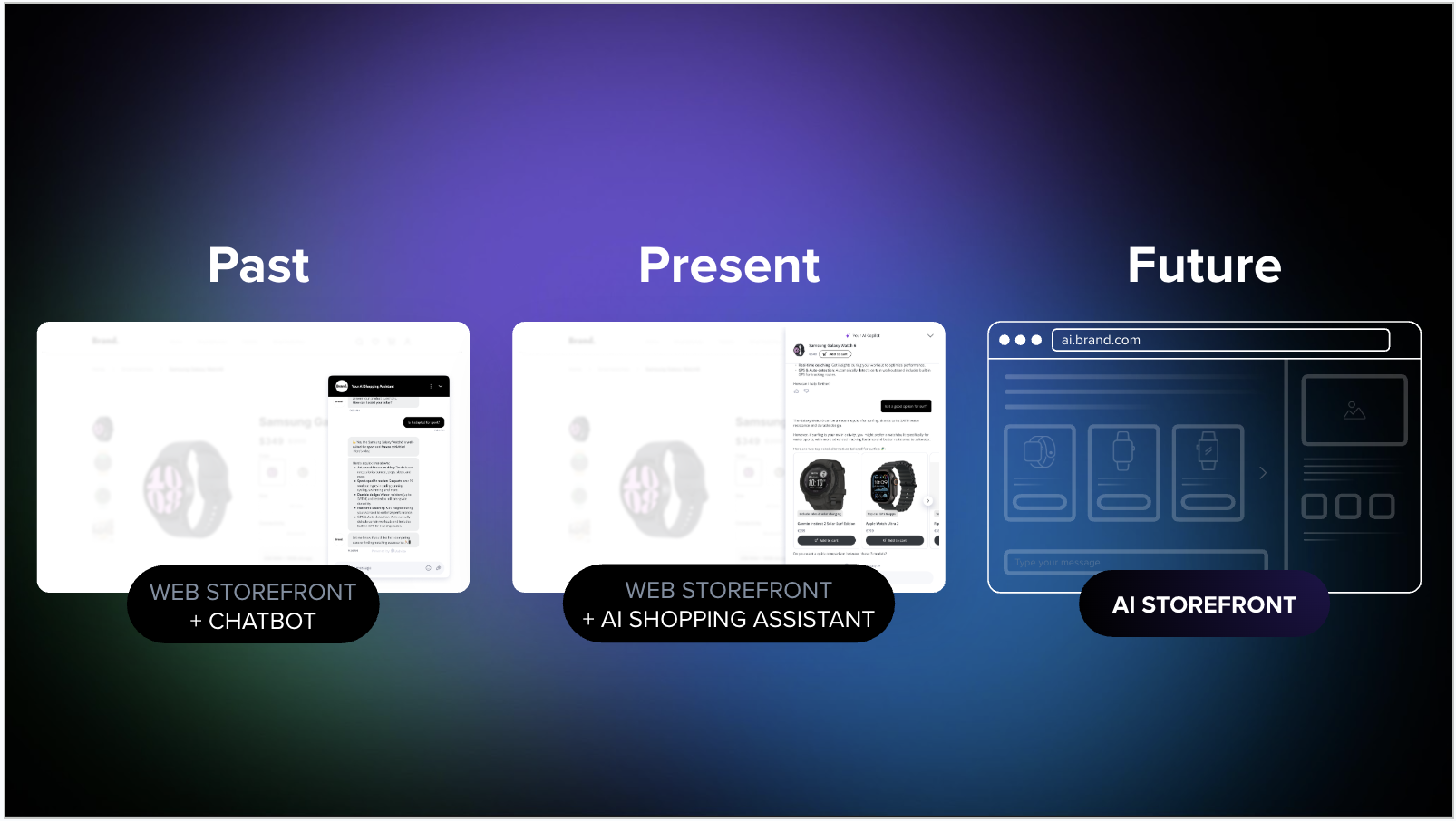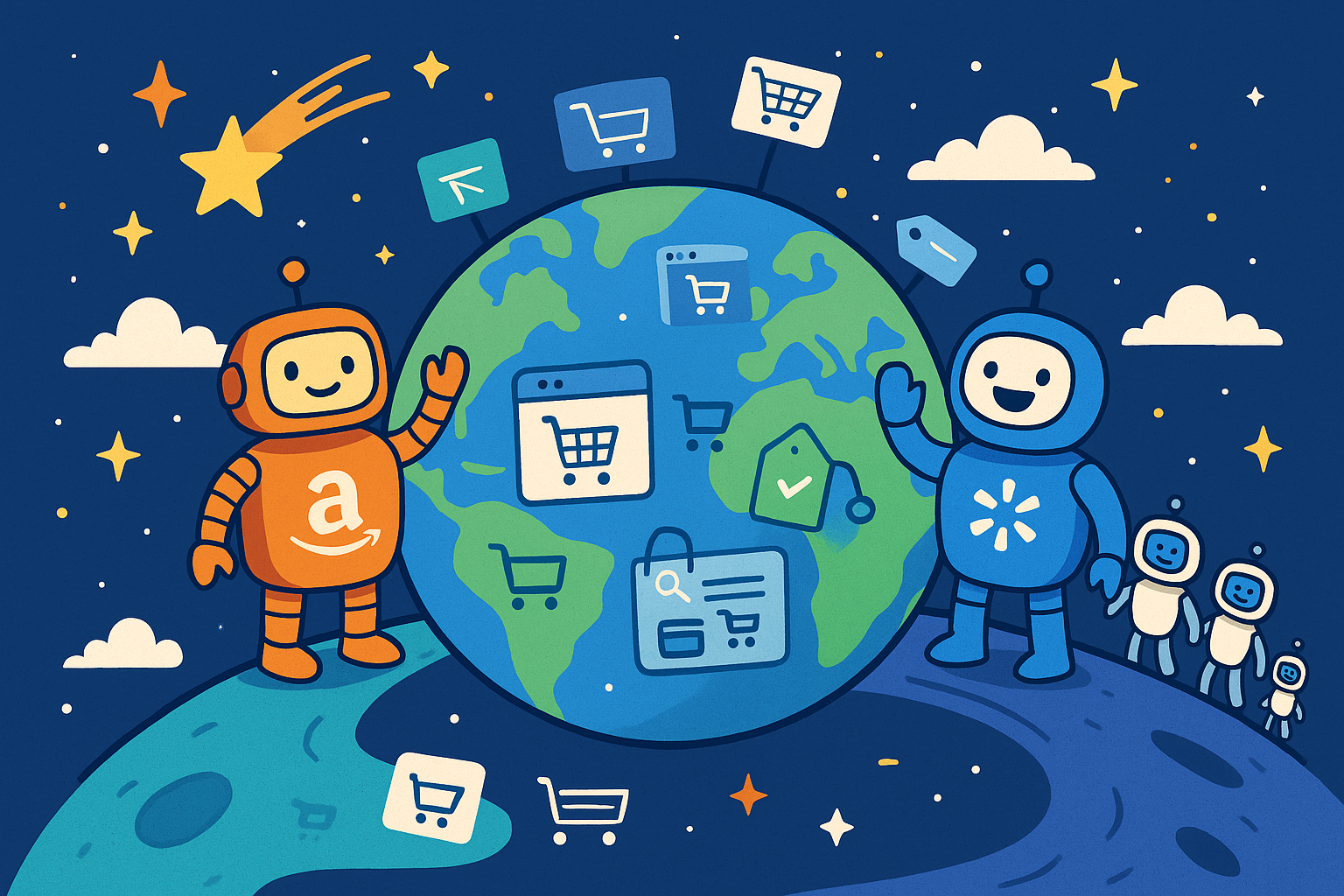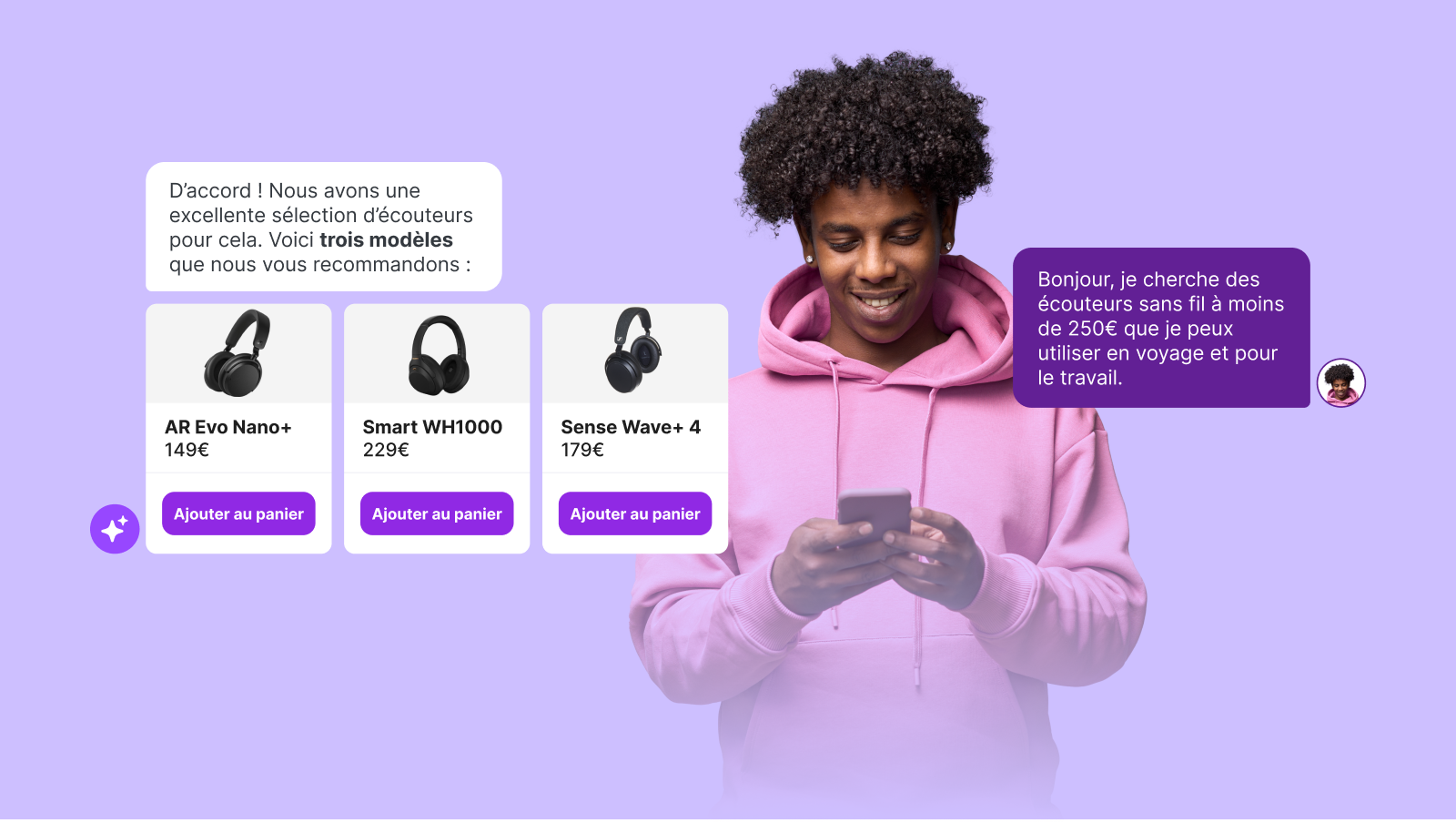3 Winning Strategies for Engaging Your E-commerce Website Visitors
iAdvize

The first impression is always the most important, especially when it’s a bad one.Henri Jeanson, writer, screenwriter, and journalist
You only have a few seconds to make a great first impression—eight to be exact, according to Microsoft. After this short period of time, an online visitor has already decided whether or not they’ll return to your website. So, how do you ensure that they not only stay, but keep coming back?
The key lies in the digital experience you provide. 73% of consumers consider the customer experience to be the most important factor in their purchasing decisions. In a world where a constant flow of digital content is mainstream, consumers demand an instant, hyper-personalized shopping experience. And if your brand can’t measure up to this lofty expectation, they can easily find another one who can. And thus, the first impression of your e-commerce website becomes crucial to determining whether you will hold potential customers’ attention long enough that they follow through with purchasing.
123FormBuilder.com found that 61% of online shoppers abandon a purchase because of a single bad experience. The challenge is to find strategies for encouraging customer engagement on your digital touch points so that you aren’t missing any conversion opportunities.
Below we’ll walk you through three key strategies for engaging your e-commerce website visitors throughout their entire buying journey.
1. Automate Lead Generation With Conversational AI
Customer Engagement: A Key Differentiator
Brands and retailers have adapted to the rising global demand for online shopping. E-commerce now accounts for nearly 20% of all global retail sales, and new online stores are popping up everywhere. Shopify estimates that 12-24 million e-commerce sites currently exist worldwide—meaning the competition for online customers is more intense than ever.
McKinsey observed that 75% of American consumers have adopted new shopping habits in response to the constantly changing economic landscape. Since shoppers can switch between e-commerce sites so easily, holding online customers’ attention has become incredibly challenging. This has also brought brands a major "loyalty shock”, with 36% of shoppers trying brands for the first time that are different from their typical favorites.
In this modern digital climate of hyper-competition and volatile consumers, customer engagement is key to brands’ sustained growth and success.
As the entire world goes online and commerce experiences its second renaissance, the side effect is that acquisition costs have reached enormous levels. The solution for brands is to increase their retention rates and customer lifetime value (CLV).Carl Rivera, VP of Product, Shopify
What is customer engagement?
"Customer engagement is the process of interacting with customers through various channels to develop and strengthen a relationship with them." – Gartner
In traditional retail, the customer's connection is established from the first contact with the salesperson, right as you walk through the door of the physical store. How might we duplicate this experience in the digital sphere? In an online environment, human conversation (over video chat or text) remains the most effective way to build this connection. This allows brands to engage the consumer and encourage purchasing, while creating a positive brand experience that exceeds their expectations.
- 89% of online users want to connect with businesses over messaging
- When customers feel connected to a brand, more than half (57%) increase their spending and 76% continue buying from them over competing brands.
Building a strong conversational strategy has become a must for companies in order to stay competitive online and improve their website traffic. However, one problem remains—how can brands provide this connection at scale?
Automate Customer Engagement with AI
Thanks to artificial intelligence and a world-class conversational platform, it’s possible to authentically connect with visitors on your e-commerce site 24/7. AI works to identify user behavior and proactively target them over messaging based on their shopping patterns (i.e. a chat window automatically appears to offer online support).
What's next? With conversational AI and intent detection, chatbots can automatically qualify requests for transfer to the most relevant respondents (an on-demand product expert, a connected in-store salesperson, a customer service representative, an FAQ page, etc.), depending on customer context and team availability.
Proactive chat is about engaging the customer at the right time in their journey to improve the online experience.Forrester
Deploying a conversational strategy automates online user engagement and builds customer loyalty through memorable customer experiences, all while boosting sales. Website visitors who use chat are 2.8x more likely to become buyers.
2. Strengthen Your Omnichannel Capabilities to Build Credibility
Cart Abandonment: A Major Challenge for Brands
In Q2 2022, 79% of all online shopping carts failed to reach the checkout phase. In other words, around 8 out of 10 shopping carts were abandoned without completing a purchase. With thousands of occurrences like this every day, cart abandonment is one of the biggest challenges that brands and retailers face because it accounts for more than $4 trillion worth of merchandise annually worldwide.
Lack of information, mistrust, high shipping costs, complicated checkouts—there are many reasons why people abandon their carts. But one thing is certain, according to the Baymard Institute, 58% of American online shoppers abandoned a cart in the last three months because they were "just browsing" or "not ready to buy." In other words, they were potential customers that lacked engagement from the sites they were shopping on.
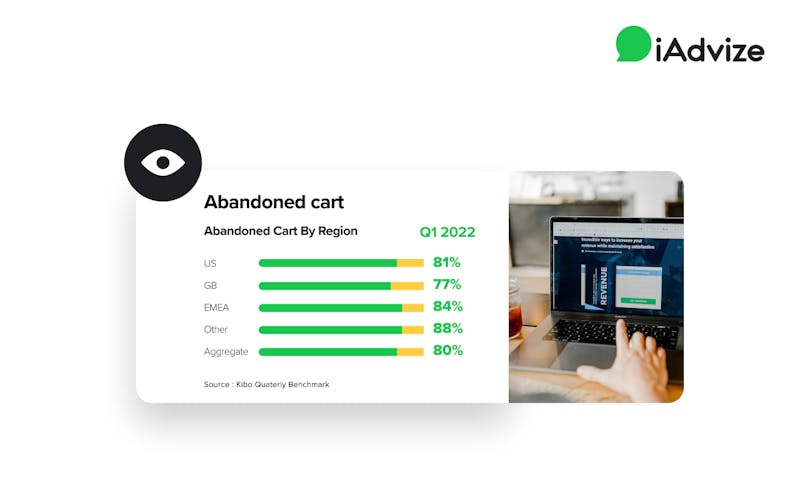
Our B2C study, 4 Ways Brands Can Save the Sale, highlights several statistics that help explain this phenomenon:
- 83% of people who gave up on a purchase were overwhelmed by the choices available to them.
- 57% of shoppers backed out of a purchase because they couldn’t judge the quality or features of the product(s) they were deciding on.
- 60% of shoppers say they want more support from brands when making a big purchase.
How can you encourage shoppers to revisit their abandoned carts?
Brands and retailers have tested different sale-saving strategies, all of which can be boiled down to two categories: reactive and proactive.

The goal of proactive techniques is to keep prospects on the website, while reactive strategies aim to provide customer experiences strong enough to keep them coming back.
Engage Prospects With an Effective Conversational Strategy
Conversational commerce must allow us to reintroduce a form of sales dialogue that can reassure, convince, and trigger the act of purchase in a prospect who has a need or intention, but is still hesitating.Frédéric Cavazza, CEO & co-founder of SYSK, fredcavazza.net
The conversational approach is a powerful way to engage online visitors and drive conversion. E-commerce websites equipped with a conversational platform benefit from targeting engines and tools that analyze visitor activity in real time (pages visited, time spent, etc.), then use this data to identify shoppers in need of assistance and connect with them in a personalized and authentic way. For example, a chat window will pop-up signaling that there’s an expert respondent ready to answer their questions and offer tailored help.
"What size do you recommend for this surfboard?"
"What’s the delivery estimate for this couch?"
The conversational approach gives buyers the information and confidence they need during the pre-sale phase to drive conversion. And it works! Online conversation is proven to boost online sales, average order value, and add-to-cart rate.
Forrester conducted a study on the total economic impact of our on-demand product expert program for businesses, and the results were illuminating. They found that shoppers who spoke with an expert (i.e. product enthusiast who's available 24/7 and acts as an online customer respondent) had an average conversion rate of 13% and a 12% higher average add-to-cart rate. This is in direct comparison to a conversion rate average of only 4% for visitors who didn’t speak with an expert.
An Omnichannel Customer Journey to Capture Every Sale Opportunity
Our goal is to support the traveler along their customer journey, from the consideration stages to post-sale, and make them want to be a loyal customer. This is what we can achieve with the help of online conversation, pre- and post-sales marketing emails, and actions like our Best Western Rewards® loyalty program.Virginie Barboux, Deputy General Director of Communication, Digital, and Customer Experience at Best Western® Hotels & Resorts, France
Over the last 10 years, customer service has seen the emergence of new digital customer communication channels that focus on messaging. This trend towards chat solutions found its foothold in the pandemic and now has dethroned email communication. New messaging channels bring the possibility of having online customer conversations directly on your brand’s website (live chat through a chatbot) and from third-party messaging applications like Facebook Messenger, WhatsApp, Apple Messages for Business, and Google's Business Messages.
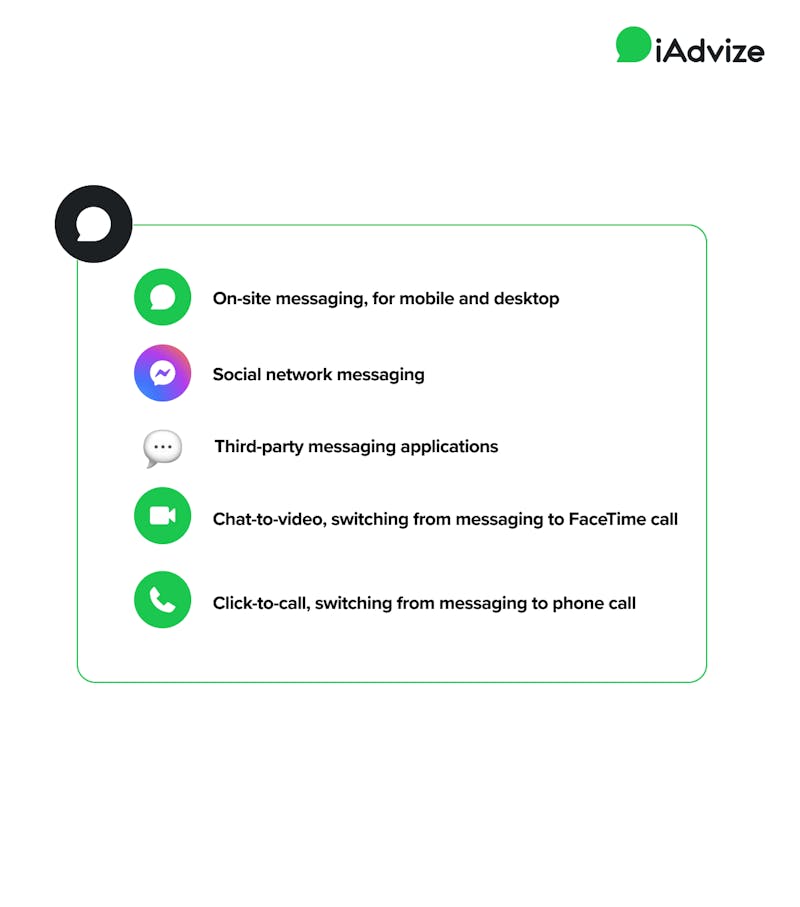
Offering website visitors a variety of digital communication channels allows brands to engage, satisfy, and retain their customers at all points of contact.
- 7 out of 10 people feel more connected to companies they can contact via messaging
- More than 65% of consumers prefer messaging over email and phone contact
Source: Meta Conversations
Messaging has become the center of our digital lives. [...] More and more, consumers want the same ease of communication with businesses.Mark Zuckerberg, CEO of Meta
The omnichannel experience that customers expect today is one where they can start a conversation wherever they are, communicate on whatever electronic device they choose, switch between the messaging channels they use daily, and come back to a saved conversation thread at a later time. With an advanced, unified conversational platform in place, this customer experience can be a reality.
With a combination of AI chatbots and expert communities, it’s possible to offer 24/7 online advice through messaging that ensures you’re not missing any sales opportunities.
3. Live Commerce: A Powerful Marketing Strategy for Online Customer Engagement
Leveraging Video Channel Popularity to Attract Prospects
The classic product display page presenting a few pictures and a simple text description is becoming underwhelming in the e-commerce space. Sure, it still drives traffic and helps convert customers already well engaged in the sales cycle, but it does nothing to inspire further action or greater connection to your brand.
The sales cycle, for which you need a strategy to engage customers at every turn, can be broken down into a dozen steps:
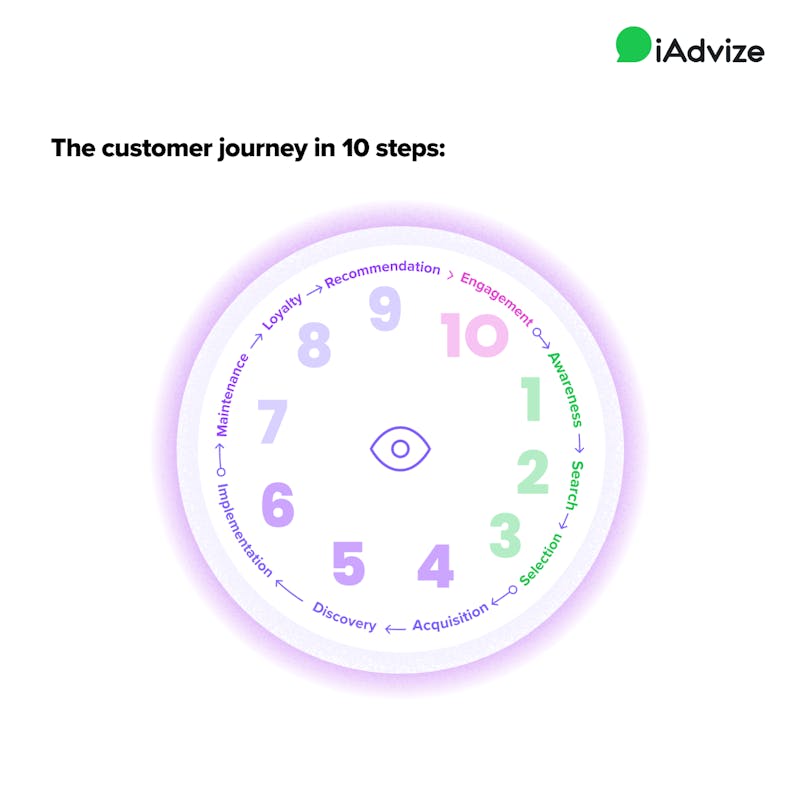
Product pages can be pretty out of touch with user preferences. Consumer habits are now more focused on entertainment and relationship building.
Consumers prefer to spend their time and money on online activities that keep them entertained. According to HootSuite, YouTube has 1.7 billion unique monthly visitors. And these visitors spend an average of 19 minutes per day on the platform.
To better connect with online prospects, brands and retailers should take inspiration from where their customers already are and consider stepping into that space, like integrating video content (e.g. live shopping) into their digital customer journey.

Live shopping is so successful today first of all because it allows us to break from an outdated model—the product page, austere and lifeless with its visuals and descriptions. Classic online sales tools are no longer attractive and cannot compete with immersive and interactive formats.Benoit Cizeron, VP Live Commerce at iAdvize
An Unparalleled Exposure Rate
The live commerce model addresses the need to make the discovery and continued relationship with a brand more interactive and immersive. Its attention-grabbing power is superior to traditional advertising, and the length of brand exposure is incomparable.
What consumer is ready to spend up to 30 minutes of their day to check out a new brand through an ad? Live-streamed shopping is a more authentic alternative because of its highly interactive features, like live exchanges and influencer hosts. Despite a vastly different format, live shopping helps people discover new products and learn more about existing ones as well as, or perhaps better than, traditional methods of advertising. The average watch time of a live shopping show is around 7 minutes according to our data–quite a long time for the online consumer attention span.

The Role of Influencers as Drivers of Engagement
As we mentioned earlier, the host of a live shopping show plays a huge role in your ability to effectively engage with customers through live commerce. To maximize an audience, brands and retailers typically use influencers or public personalities (like brand experts, thought leaders, actors, etc.) who have large online fan communities.
An Immersive, Interactive Channel That Puts Prospects at the Center of the Buying Experience
For the Magimix brand, we embarked on the project of accompanying our audiences on a program that was a little longer and less of a ‘one shot’ to create engagement by giving our audiences an appointment each week.Klervia Bianchi, Director of Performance & Innovation at UNIFY GROUP
Live stream shopping works so well as a web purchasing channel because it shifts the focus from the products or services being sold to the viewer and their shopping experience.
The typical purpose of hosting a live shopping show is to present your brand’s products or services. Live commerce shows also work well to highlight other events in tandem. For example, Canal +, a sporting goods company, uses live shopping technology to broadcast sporting events. See this article for some other creative format examples.
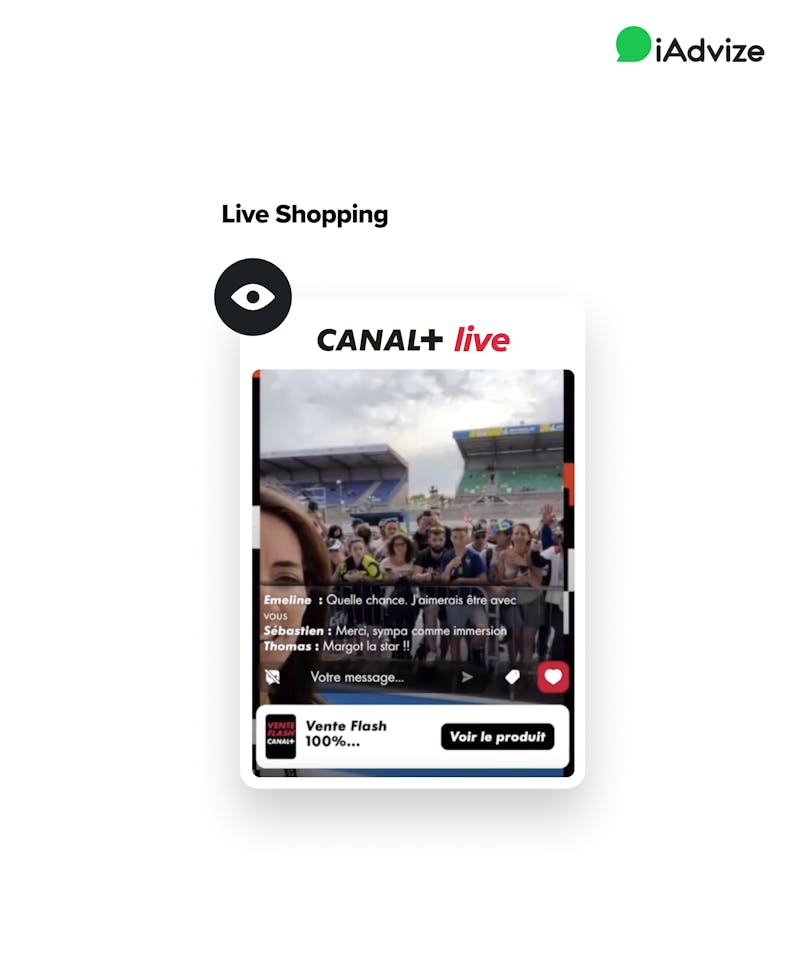
It's a true conversational experience for viewers, who log in and can watch the event, participate in the chat, and purchase products without ever leaving the streaming page. To gamify the experience, customers can answer polls, share their opinions, and participate in contests to win prizes throughout the live.
Live commerce is a powerful lever for online prospect engagement and customer acquisition because the experience is more likely to engage viewers than any other digital buying channel.
In a digitized world, it has become a massive differentiator to offer consumers rich, human interactions before they even make an online purchase. Conversational channels offer brands unique opportunities to engage prospects in the buying journey and bridge the gap between expectation and reality of the digital experience. Conversational AI, proactive messaging, live commerce—an omnichannel strategy has become a must-have to reach prospects who are present on a multitude of messaging interfaces. Engaging online visitors is the crucial first step in conversational commerce.
The iAdvize 360° Conversational Platform has been providing this type of engagement, commerce, and support solution for over 12 years to 2,000 brands. Make an appointment with our experts to evolve your brand into the conversational era!

.png)
.png)


